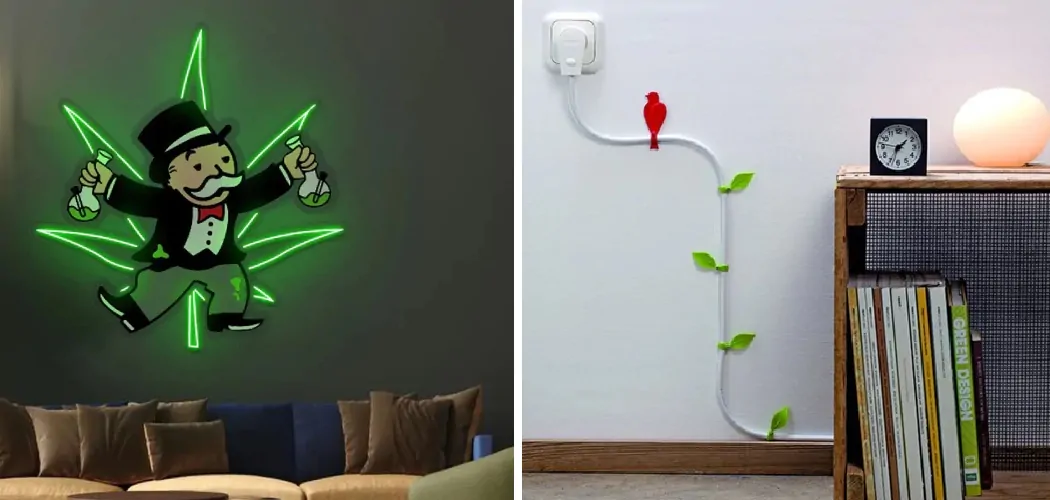In the vibrant world of neon lights, where dazzling signs illuminate the urban landscape with a kaleidoscope of colors, the unsightly tangle of wires often poses a design challenge.

Crafting an aesthetic environment requires not only the artful placement of neon signs but also the strategic concealment of their accompanying wiring. Taming the chaos of cables without compromising the visual impact of the luminous display demands ingenuity and careful planning.
In this guide, we delve into the creative solutions and practical techniques for how to hide neon light signs wires, ensuring a seamless integration of form and function.
Whether you are an avid enthusiast of neon aesthetics or a business owner looking to enhance your storefront, this exploration will empower you to navigate the intricacies of wiring concealment, allowing your neon masterpiece to shine brightly while maintaining a clean and polished visual appeal. Uncover the secrets of wire management and transform the way you experience the dazzling allure of neon artistry.
Definition of Neon Light Signs
Neon light signs are luminescent panels made from glass tubes that have been filled with a rarefied neon gas and other inert gases, such as argon, krypton, and xenon. When subjected to a high-voltage electric current, these gases emit a vivid glow, resulting in the characteristic radiance that neon is known for.
The tubes can be bent and shaped into a variety of forms, allowing for an extensive range of creative expression. Neon signs have been traditionally used for advertising, art, and architectural accents, and they are appreciated not only for their brightness but also for the nostalgic flair they lend to their surroundings.
Importance of Hiding Wires
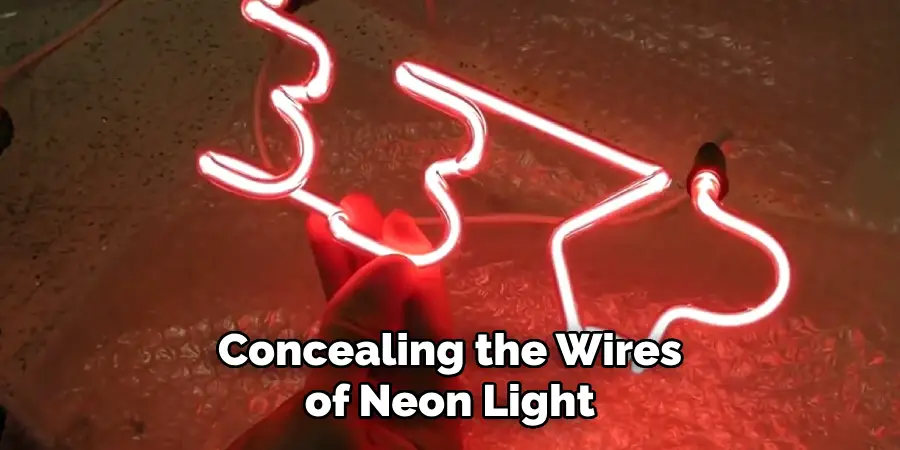
Concealing the wires of neon light signs is more than an act of tidiness; it is crucial for both safety and aesthetics. Exposed wires can lead to unintentional trips and falls, creating a hazard in areas of high foot traffic. Furthermore, tangled or conspicuous cables can detract from the sleek, professional look that neon lights are intended to provide.
By effectively hiding the wires, you promote an uninterrupted and immersive visual experience, allowing viewers to appreciate the neon sign’s vibrant artistry without the distraction of electrical components. Effective wire management also protects the cables from environmental factors and potential damage, which is essential for the longevity and maintenance of these luminous pieces.
Understanding Neon Light Sign Wiring
Neon light sign wiring comprises a network of electrical cables that power the gas-filled tubes, igniting their mesmerizing glow. These wires are typically masked behind the sign or within the structure that supports it, maintaining an uncluttered appearance. Understanding the components involved is crucial for anyone attempting to create or maintain a neon sign display.
The main elements include the transformer, which steps up the voltage to activate the gas, the electrodes that connect to the ends of the neon tubes, and the power supply cords. Each of these must be strategically placed and secured to ensure the sign operates correctly and safely.
Familiarity with the wiring also allows for better planning when considering the placement of your neon sign, ensuring the power requirements are met without compromising the design or safety standards.
Types of Wiring Used
In the realm of neon light signs, various types of wiring are employed to ensure the longevity and proper functioning of the displays. The most commonly used wiring includes the following:
- GTO Wires: High-voltage GTO cables are specifically designed for neon lighting. They are built to handle the considerable voltage requirements of neon signs, often up to 15,000 volts, and are usually coated with silicone or rubber insulation to withstand the elements.
- Electrode Wires: These are used to connect the electrodes of neon tubes to the power source. They are typically shorter wires, as they do not run the full length of the sign but rather serve as connectors between each neon element and the power supply.
- Power Supply Cords: The main lifeline of the neon sign, these cords connect the transformer to the electrical source. The quality and specifications of these cords are vital to handle the power load without overheating or causing electrical interference.
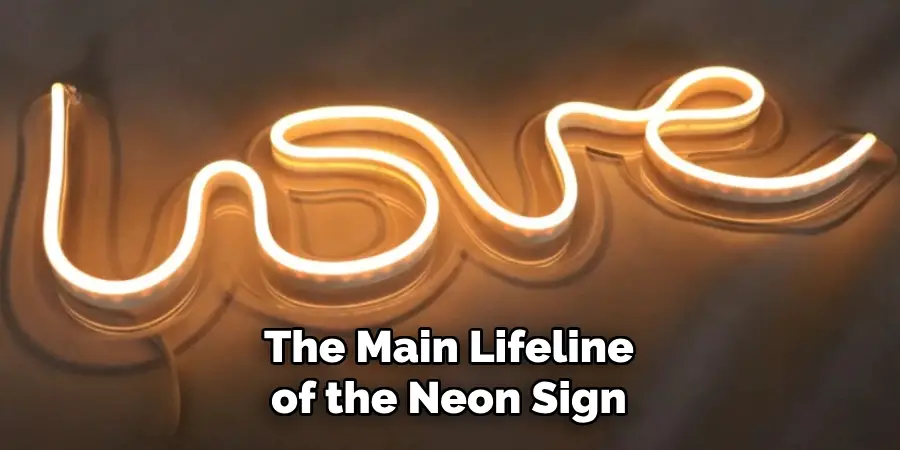
Understanding the types of wiring used in neon signs is essential for not just installation and design, but also for troubleshooting and repairs. Each type of wire has specific properties and uses, and knowing these details contributes to more efficient wire management and concealment strategies.
Strategies for Concealing Neon Light Sign Wires
Concealing the wires of neon light signs is both an art and a science, requiring a blend of creativity and practical skill. Here are some effective strategies to ensure those glowing signs stand out for their beauty, not their wiring:
- Cable Raceways: These are sleek, paintable channels that can be attached to the surface behind or near the neon sign, ensuring that wires are hidden while still allowing for easy access in case of maintenance.
- Cord Covers: For a quick and easy solution, flexible cord covers can be used to bundle and conceal the wires. They come in different colors, which can be matched to the wall or the sign itself.
- Custom Millwork: For those looking for a more seamless integration, custom carpentry can create built-in channels or panels that elegantly incorporate the wiring within the structure of the sign’s housing.
- Strategic Placement: Skillful positioning of furniture, decorative elements, or plants can effectively obscure the wiring from the viewer’s eye without the need for additional fixtures.
- Use of Conduits: Metal or plastic conduits can be employed to guide wires from the power source to the neon sign in a neat, orderly fashion that aligns with regulatory safety standards.
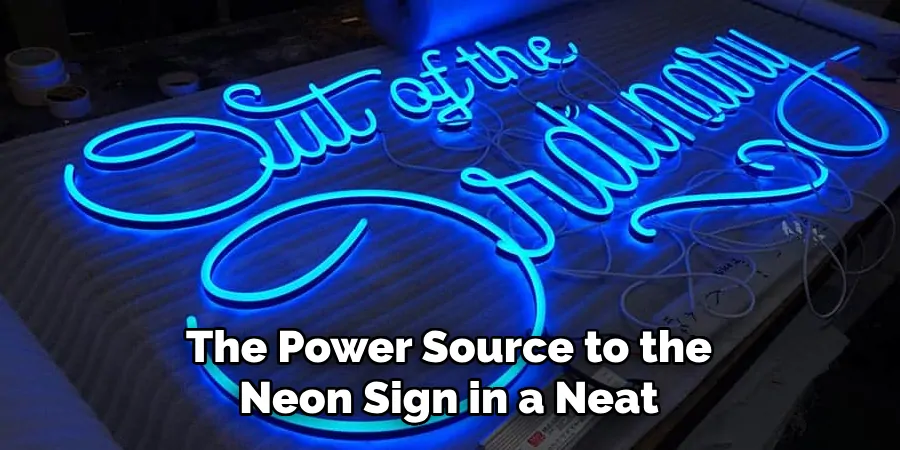
Each of these methods can be tailored to fit the specific design needs and environmental considerations of any neon sign installation, ensuring that the focus remains on the vibrant allure of the sign itself.
10 Methods How to Hide Neon Light Signs Wires
1. Concealed Channels:
One of the most popular and discreet methods involves the use of concealed channels. These can be surface-mounted or recessed into walls or ceilings, providing a dedicated space for the wires to run through.
This not only hides the wiring but also protects it from damage and allows for easy access when maintenance is required. Concealed channels are especially useful for new construction or major renovations, as they can be built into the design of the space.
Some common types of concealed channels include raceways, conduit, and wire molding. Raceways are typically used for small wires and cables and come in various sizes and shapes such as square, round, or rectangular.
Conduit is a more heavy-duty option, often made of metal or PVC, and is used for larger wires and electrical components. Wire molding is a versatile option that can be painted to match the surrounding walls, making it nearly invisible.
2. Cable Raceways:
Cable raceways are versatile solutions that come in various sizes and styles, offering a sleek and organized way to conceal neon light sign wires. These plastic or metal channels adhere to surfaces, such as walls or ceilings, providing a conduit for the wires while allowing for easy installation and removal. This makes them an ideal choice for both commercial and residential settings.
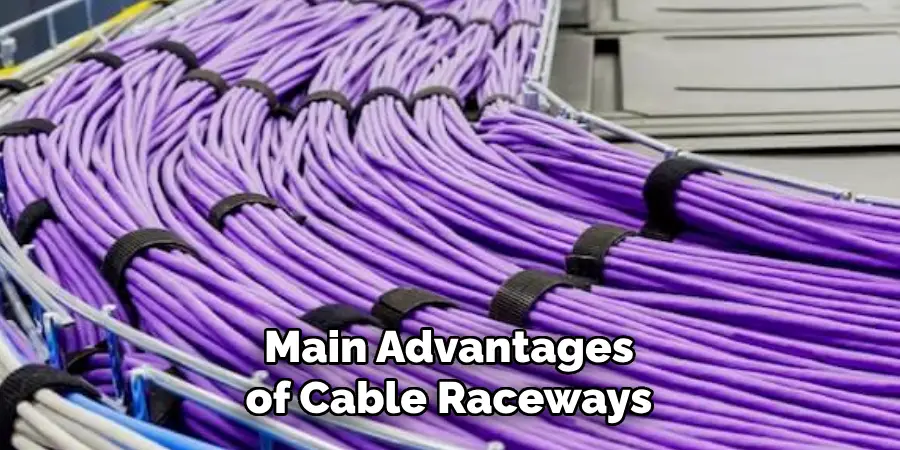
One of the main advantages of cable raceways is their ability to improve safety by reducing tripping hazards. Wires can easily become tangled or scattered, especially in high-traffic areas, which can be hazardous for people walking by. By keeping wires neatly contained within a cable raceway, the risk of accidents and injuries is significantly reduced.
Moreover, cable raceways also protect wires from damage and wear. Exposed wires can be easily damaged by environmental factors such as moisture or extreme temperatures, as well as accidental bumps or scratches. Cable raceways provide a protective barrier that minimizes the risk of these damages, ensuring the longevity and functionality of the wires.
3. Wire Molding:
Wire molding, also known as cord covers, is a practical option for hiding neon light sign wires. These coverings are available in different materials, such as PVC or paintable options, allowing them to blend seamlessly with the surrounding decor. Wire molding is typically easy to install and can be painted to match the wall color.
One of the main benefits of wire molding is its ability to keep wires organized and hidden, creating a clean and neat appearance. This is especially useful in areas where there are multiple wires running along walls or corners, such as offices or entertainment rooms.
In addition to their practical use, wire moldings also offer a safety aspect by keeping wires out of reach from children or pets. This reduces the risk of accidents or damage to the wires themselves.
Wire molding can also be a cost-effective solution for concealing wires, compared to other options such as custom-built cabinets or wall-mounted wire covers. It is a relatively affordable and easy alternative that still provides a polished look.
4. Behind Decorative Elements:
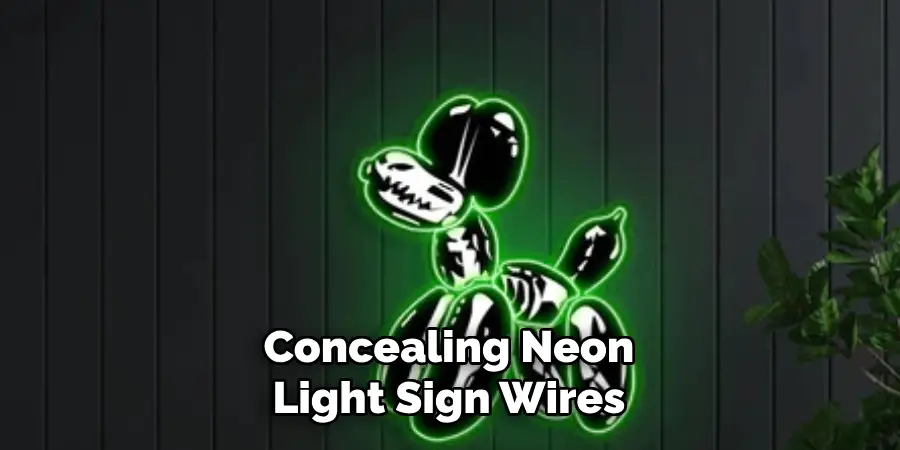
Incorporating decorative elements, such as faux beams, trims, or molding, into the design can serve a dual purpose of enhancing aesthetics and concealing neon light sign wires. By strategically placing these elements around the wires, you can create a visually appealing and cohesive look while keeping the functional aspects discreet.
Decorative elements can also serve as a way to add texture and dimension to your space. From rustic wooden beams to ornate crown molding, there are countless options available that can complement different design styles. These elements not only add character but also create a focal point for the room.
5. Invisible Cable Suspension:
Utilizing invisible cable suspension systems can be an innovative way to hide neon light sign wires, especially in settings where a floating effect is desired. Thin and nearly transparent cables suspend the neon signs, giving the illusion that they are hanging effortlessly in mid-air, while the wires remain discreetly hidden.
This not only adds a touch of modernity and sophistication to the sign, but also allows for more focus on the actual design and message of the neon lights.
Invisible cable suspension systems are commonly used in various settings such as retail stores, restaurants, art galleries, and even in homes. They allow for a clean and minimalist look that can complement any type of interior design. Additionally, these systems are highly customizable and can be adjusted to fit the specific size and weight requirements of a particular neon sign.
6. Under Furniture or Cabinets:
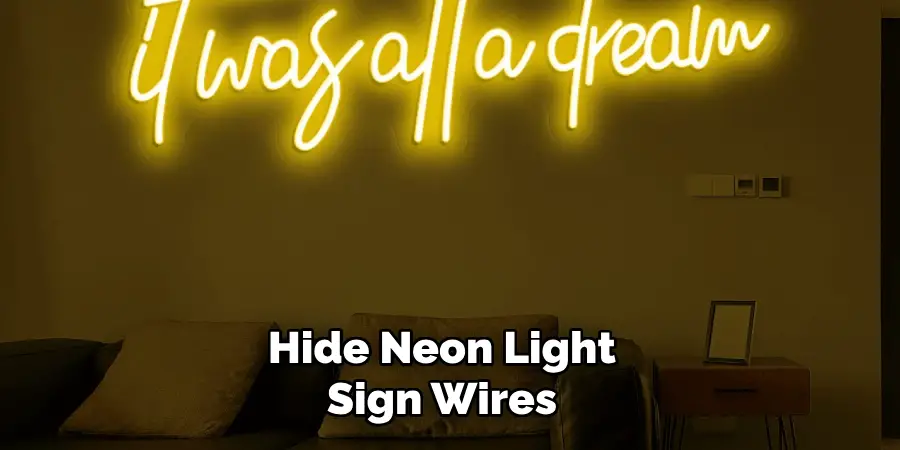
Strategic placement of furniture or cabinets can be leveraged to hide neon light sign wires. By running the wires underneath these fixtures, you not only keep them out of sight but also utilize the existing elements of your space to contribute to the concealment, creating a seamless and integrated look.
In addition to furniture and cabinets, there are other creative ways to hide neon light sign wires. For example, you can use wall-mounted shelves or decorative curtains to cover up the wires while still maintaining a stylish look. Another option is to install a false ceiling or crown molding which can easily conceal any exposed wiring.
For those who prefer a more modern and minimalist approach, you can opt for wire management solutions such as cable ties or cord covers. These not only hide the wires but also keep them organized and tangle-free.
7. Wireless Neon Signs:
Embracing technological advancements, wireless neon signs eliminate the need for visible wires altogether. Battery-powered or wirelessly powered neon lights are becoming increasingly popular, providing the flexibility to place neon signs without being restricted by the proximity of power outlets. This is particularly advantageous for outdoor spaces, where installing wired neon lights can be a challenge.
Furthermore, wireless neon signs are also energy efficient and environmentally friendly. Since they do not require constant electricity to operate, they can significantly reduce energy consumption and carbon footprint. With the increasing focus on sustainability, many businesses are opting for wireless neon signs as a more eco-friendly option.
8. In-wall Wiring:
For those undertaking a renovation or construction project, incorporating in-wall wiring is a comprehensive and permanent solution. This involves running the wiring within the walls during the construction phase, requiring careful planning and coordination with electricians but resulting in a completely hidden and streamlined appearance.
In-wall wiring is a popular choice for homeowners looking to create a clean and modern aesthetic, as well as for safety reasons.
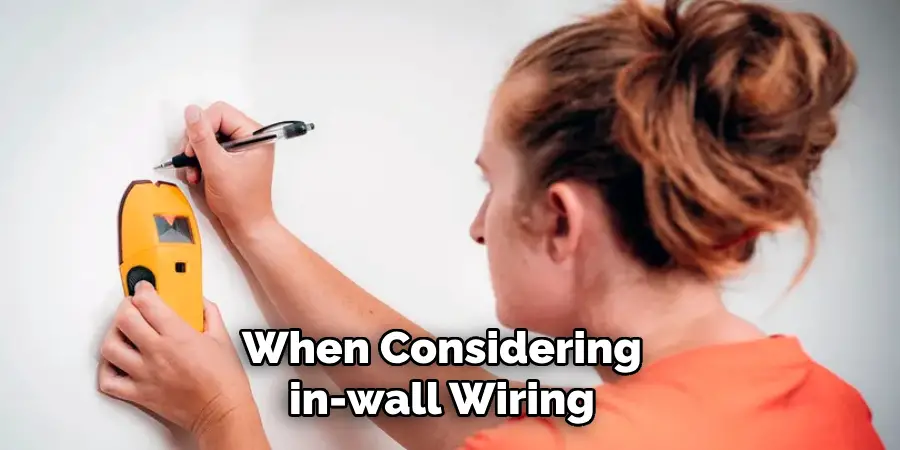
When considering in-wall wiring, it is important to first determine the locations of outlets, switches, and other electrical components. This will depend on the layout of the room and the intended use of each space. It’s also important to consider any future changes or additions that may be needed, such as adding new technology or appliances.
9. Custom Enclosures:
Designing custom enclosures for neon light sign wires allows for a tailored solution that seamlessly integrates with the overall design aesthetic. These enclosures can be crafted from materials that match the surrounding environment, effectively camouflaging the wires while adding a unique touch to the display.
In addition to aesthetics, custom enclosures also serve a functional purpose. They can protect the wires from exposure to harsh weather conditions, preventing damage and ensuring longevity of the neon lights. Enclosures also provide a secure way to contain the wires, reducing the risk of accidents or tampering with the electrical components.
There are various types of enclosures that can be designed for neon light sign wires, including weatherproof enclosures, junction boxes, and raceways. Weatherproof enclosures are typically made from durable materials such as aluminum or PVC and are designed to withstand outdoor environments.
10. Camouflage with Artwork or Murals:
Integrate the neon light sign wires into the overall artistic theme of the space by incorporating them into murals or artwork. Thoughtful design can turn the wires into part of the visual storytelling, allowing them to blend seamlessly with the surrounding art while serving a practical purpose.
Artwork and murals are an excellent way to add personality and character to a space. By incorporating neon light sign wires into the overall design, you can create a cohesive and eye-catching aesthetic. This approach not only adds visual appeal but also serves as a functional solution for hiding unsightly wires.
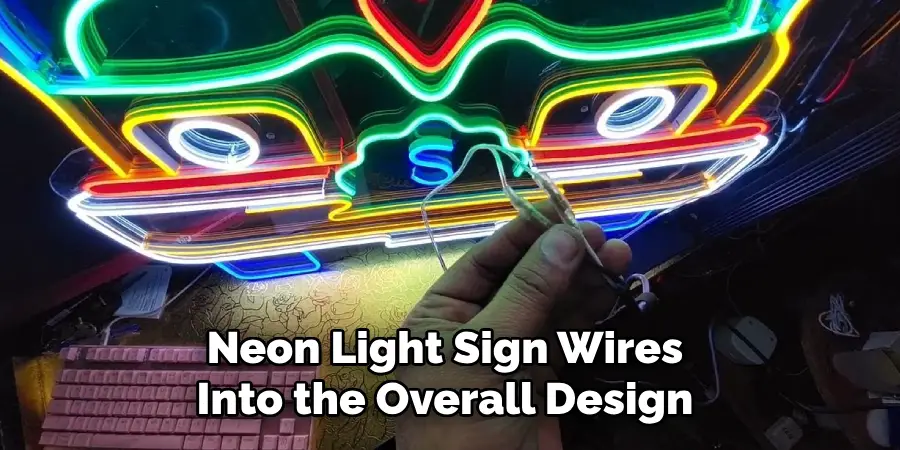
The key is to carefully plan the placement of the wires within the artwork or mural. This will require coordination with a professional artist or designer to ensure the wires are concealed in a way that adds to the overall composition and doesn’t detract from it.
Conclusion
In conclusion, effectively hiding neon light sign wires is essential for maintaining a clean, professional aesthetic while ensuring safety and compliance with building codes. By understanding the components of neon signs and the various wiring techniques available, individuals can confidently tackle the task of concealment.
Whether through integrating wires within walls, utilizing molding, or incorporating decorative elements, there are diverse methods to suit different preferences and spaces.
However, it’s crucial to prioritize safety measures and ensure wires are properly insulated and secured to prevent hazards. Regular maintenance and inspection also play a significant role in maintaining the concealment and functionality of the wiring system.
Hopefully, this article gave you some helpful tips about how to hide neon light signs wires successfully, so now that you have the proper knowledge on how to get the job done, why not give it a try today?

